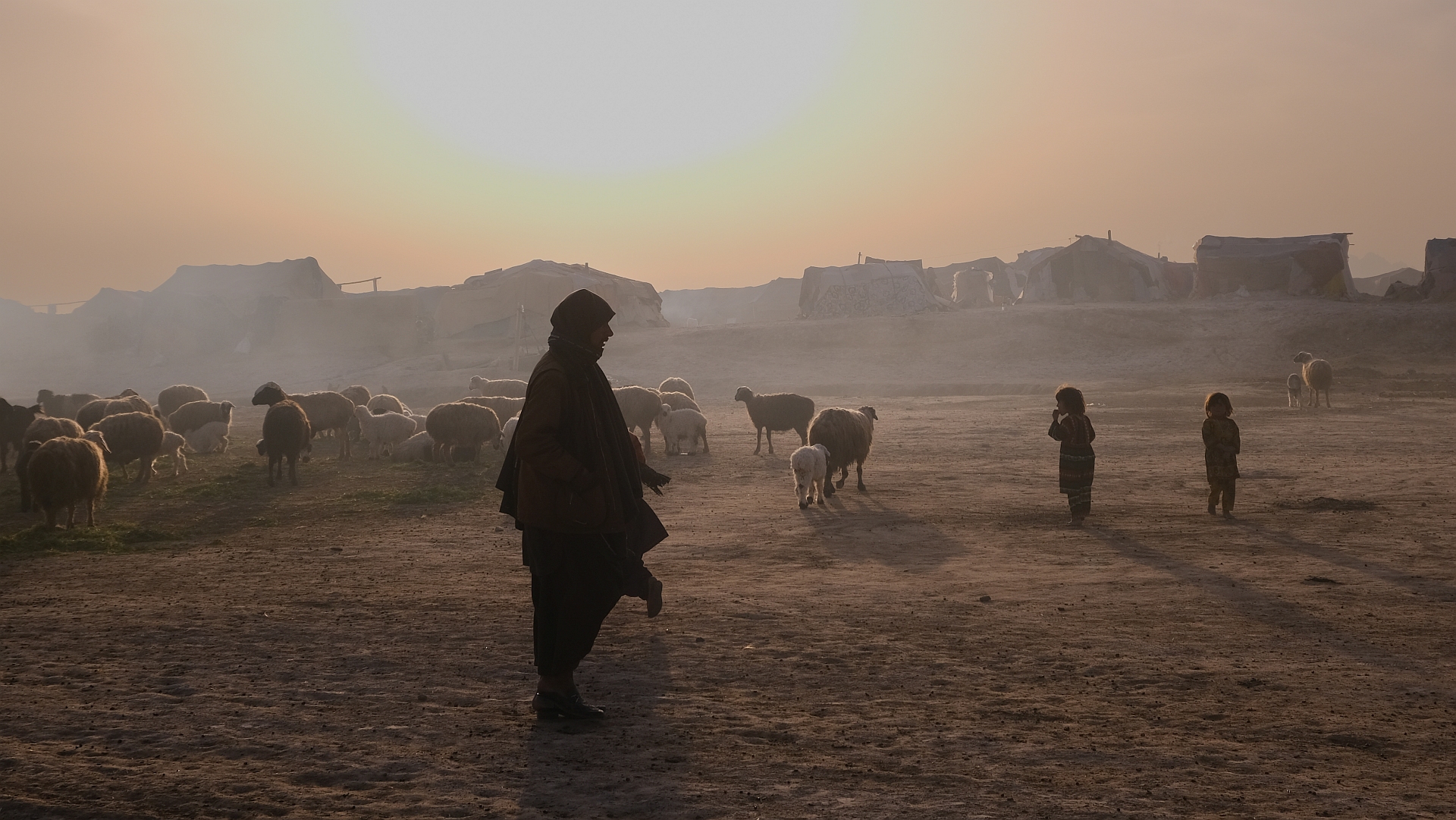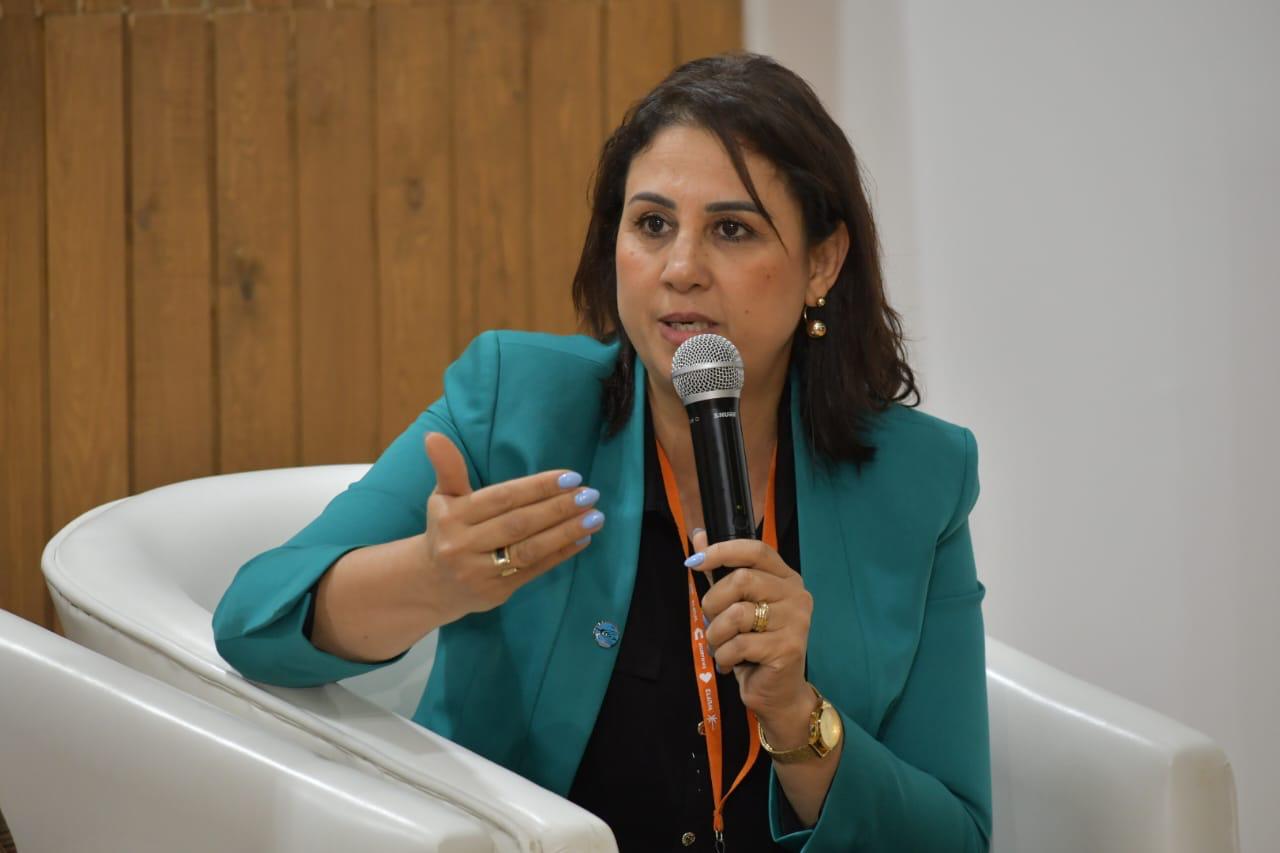Greening agriculture, water scarcity and climate action
From sand and dust storms to sustainability: How pastoral communities are reviving rangelands

©FAO/Richard Trenchard
Every year on 12 July, we commemorate the International Day of Combating Sand and Dust Storms (SDS), a day that calls for awareness and action against one of the world’s most pervasive yet underrecognized natural phenomena. In the Near East and North Africa (NENA) region, the challenge is more pressing than ever. The vast Sahara, combined with shifting climate patterns and human-driven land degradation only amplifies SDS’ reach and intensity. Their consequences, such as obstructed roads, damaged crops, strained healthcare systems, are impossible to ignore, posing threats to national and regional development agendas and Sustainable Development Goals (SDGs).
SDS in a changing landscape
From the ancient dunes of the Sahara to the oasis towns and farmland, SDS have always been part of the natural rhythms of NENA, however, their modern manifestations reveal deeper challenges. Climate change is fuelling more frequent droughts, while overgrazing and unsustainable irrigation strip soils of their resilience, leaving landscapes open to erosion. With the UN Decade on Combating Sand and Dust Storms (2025–2034) now underway, regional and global actors contend with an invisible threat that demands visible impact.
The intersection of pastoralism and SDS
Pastoralists and agropastoralists in NENA navigate a delicate balance, moving livestock across rangelands, seasonal pastures, and watering holes. Yet, when drought and dust storms intensify, this mobility falters. Grazing corridors swell with fewer green shoots, watering points vanish or turn brackish, and animals and herders confront a harsh new normal.
Many studies shows that pastoralists depend on secure water access to remain mobile and adapt to harsh climate conditions in the region. Meanwhile, farmers have expanded cultivation onto pastoral lands due to modernization and land reforms. This shared use of land and water often leads to conflicts, especially when livestock damage crops or when water resources become scarce.
Recognizing such vulnerabilities, the upcoming 2026 International Year of Rangelands and Pastoralists spotlights these communities, underlining the urgency of interventions that knit together landscape, climate, and livelihood.
Sudan: Rebuilding bonds between trees, pastures and people
In the Sudan, pastoralists still make up over 20 percent of the population. Shaped by climatic and environmental conditions, pastoralism has evolved into both a way of life and a system of natural resource use and management. Practical solutions are emerging to help communities adapt and restore ecosystems.
In Kordofan, the GAMS (Gums for Adaptation and Mitigation in Sudan) initiative is reversing the impacts of desertification and dust by strengthening ecosystems and supporting the communities that rely on them. Over 500 gum Arabic producer associations are receiving training, access to quality infrastructure, and entry into value adding markets. GAMS goes further, it’s reviving rangeland corridors and restoring watering points, freeing pastoralists to move their herds without degrading fragile forest-agroforestry mosaics, resulting in a vibrant cycle of regeneration, where green gums sequester carbon, support markets, and hold shifting sands in check.
Another landscape in the Sudan witnesses a different kind of transformation: riverine forests along the Nile. Across 33 forest reserves, FAO is blending biodiversity conservation with livelihood growth, employing adaptive land-use planning to fend off unsustainable grazing and farming. In these floodplain areas, green buffers help reduce dusty winds and contribute to both environmental and social benefits.
Simultaneously, smallholder farmers, agropastoralists, and pastoralists across Sudan are benefiting from integrated watershed management. With a vision for climate-smart productivity, the project emboldens farmers to adopt cleaner agroprocessing techniques, sharpen financial acumen, and expand markets for dairy, grains, fruits, meats, and herbs. Women and youth are key here, seizing new leadership roles and entrepreneurial opportunities. Through diversified incomes and fortified soil and water systems, these communities are better positioned to weather dust-laden seasons and drought’s sting.
Mauritania: Cultivating hope in arid rangelands
In Mauritania, FAO’s work illustrates a powerful narrative of regeneration at watershed scale. In the Southeast, pastoral communities are gaining access to sustainable water management strategies, drought-adapted agricultural methods, and participatory governance. Nature-based solutions like soil contouring, native plantings, and water harvesting are now standard practice, minimizing erosion, sequestering water, and nurturing forage. These efforts are both environmental and economic, unlocking opportunities tied to livestock, grains, and agroforestry under growing climate risks.
Complementing this approach, FAO’s engagement with non-wood forest product (NWFP) value chains supports the broader Great Green Wall ambition. In Mauritania and neighbouring dryland states, NWFP assessments are yielding data-driven, sustainable harvesting guidelines. This results in marketable resources for communities, bolstered biodiversity, and strengthened ecosystems that anchor against dust storms and land degradation.
A parallel initiative, the Inclusive Livestock Sector Development Project (AWKAR Project), carries the vision into national policy. Here, institutional innovation aims to align technology, resilience, and inclusion. Producers gain access to climate-tuned inputs and market services, while governance systems learn to anticipate drought, desertification, and even dust events. The programme anchors pastoral innovation across public and private sectors, ensuring that recovery and opportunity go hand-in-hand.
Both Mauritania and Sudan are part of the Pan-African Great Green Wall (GGW) initiative. Beyond ecological restoration, the initiative plays a vital role in strengthening the livelihoods of pastoralist and rural communities by improving access to water and pasture, rehabilitating rangelands, and reviving traditional transhumance routes.
Near East Forestry and Range Commission 27 in Abha
From 28 September to 2 October 2025, the 27th session of the Near East Forestry and Range Commission (NEFRC) will convene in Abha, Saudi Arabia, marking a powerful 70 years of regional cooperation. In partnership with Saudi Arabia’s National Center for Vegetation Cover Development and Combating Desertification (NCVC), NEFRC27 will bring together policymakers, technical experts, youth leaders, and innovators to explore forestry and rangeland solutions in an arena where combating SDS is front and centre. Running in parallel, the 6th Near East Forestry Week will showcase ecotech innovations, youth-led synergy, and cross-sector dialogues, underscoring a collective vision for resilient landscapes.
From awareness to action: a shared journey
As we observe this SDS Day, we must underline that sand and dust storms are powerful forces that can shape economies, ecosystems, and human progress. In NENA, the synergy between pastoralist resilience, landscape restoration, and integrated policy is proof that ancient challenges are best met with modern solutions imbued with local wisdom. From Sudan’s gum forests to Mauritania’s resilient watersheds, these FAO-backed projects illuminate a horizon where dust yields to green corridors, where communities chart sustainable futures, and where land transforms from vulnerability into vitality. Looking ahead, NEFRC 2025 offers a moment to celebrate progress and map the path ahead.

By: Fidaa Haddad
Senior Programme Officer, FAO Regional Office for Near East and North Africa
